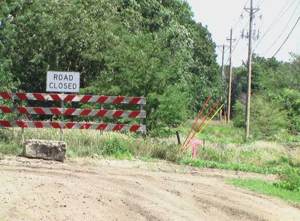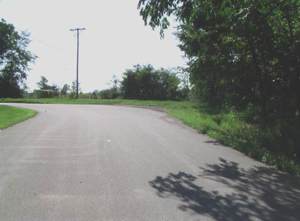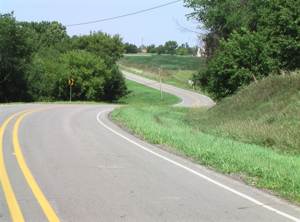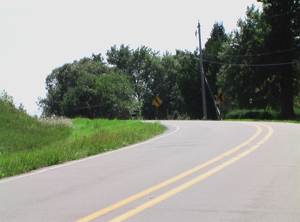Questionable Funding Methods (Funding Via ICAAP) *
|
The City of Ankeny has applied for funding for the proposed N.E. 18th overpass via ICAAP (Iowa Clean Air Attainment Program).
The
Des Moines Area MPO is currently taking project applications for Fiscal
Year (FY) 2008 ICAAP funds in order to submit a resolution of support for
each applicant project to the Iowa DOT. The MPO staff received Letters of
Intent for the following projects:
To be eligible for ICAAP funding, the proposed projects and programs should fit into one or more of the following categories: Traffic Flow Improvements Highway and street projects that focus on reducing traffic congestion, vehicle idling time, stop and go driving and travel delays; enhancing bus transit performance; and improving air quality. Projects may include traffic signal modernization, synchronization or coordination; incident management programs, ramp metering, intersection improvements such as adding turn lanes; and other projects that achieve the objectives of the ICAAP. |
|
Examples of eligible activities under the program are proposals that improve motor vehicle traffic flow, public transit service and intermodal freight movement; reduce traffic congestion and single-occupant vehicle travel; and help finance the purchase of publicly owned alternative fuel vehicles and bicycle and pedestrian facilities and programs. NE 18th street is a dead end road with little traffic. The proposed overpass leads into a rural area. Use of ICAAP funding for the overpass should be considered a misallocation or misuse of funds. The funding is intended to relieve heavily congested traffic areas. On the east side of I-35 the N.E. 18th Street transitions into NE 102 Avenue which is part of rural Polk County. This road turns into a gravel road approximately 1/2 mile away from the end of the NE 18th overpass project. Frisk Drive is a curvy road that has no shoulders with steep embankments. This a dangerous road to route traffic through. Neither road has the potential to carry substantial traffic. The NE 18th overpass project has a functional classification as a “local” road. The overpass leads into an area with a low population density.
|
|
|
|
|
|
|
|
|
Sponsors must describe in the application the methodology, assumptions, and sources of data used in the analysis. For air quality improvement analysis, applicants should use the latest available VOC (HC), NOx, and CO, PM-2.5 and PM-10 emission factors provided by the Iowa DOT. For the traffic congestion reduction analysis, applicants should use travel demand (e.g. average daily traffic volumes) anticipated to occur when the project is implemented. Sponsors may need to provide additional information upon request by the Iowa DOT during its review of applications.
|
|
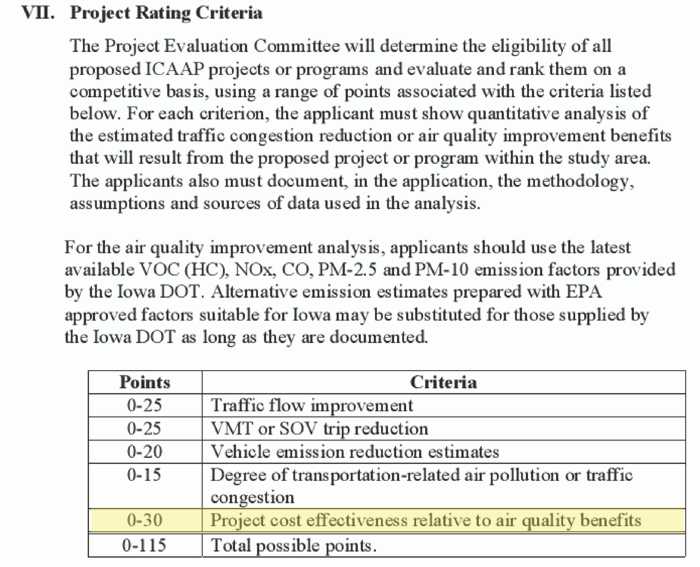 |
|
|
Project Rating Criteria (0-30 points): Project cost-effectiveness relative to associated air quality benefits. Project applicant must calculate the cost-effectiveness of the proposed project by dividing the average annual total cost of the project (total project cost divided by expected project life in years) by the total annual vehicle emissions reduction in kilograms per year for each target pollutant. [Average annual total project cost (dollars)] divided by [emissions reduction (kilograms per year)]. * If you find any inaccuracies please notify me through the contacts menu under Ankeny Watch
|
|
